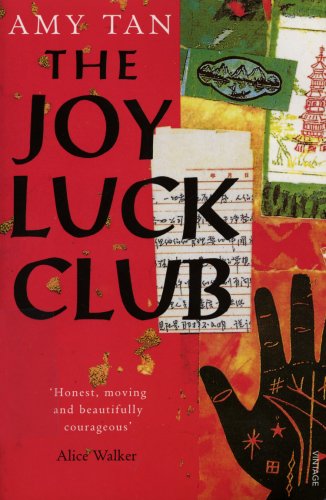Article in brief: the author shares her book review on “The Joy Luck Club”.

“For unlike my mother, I did not believe I could be anything I wanted to be. I could only be me.”
-Amy Tan
The Joy Luck Club is Amy Tan’s first and finest literary work in the genres of women’s literature and Asian American literature. It is a literary piece that can be seen as insightful, sad, and funny. It is a well-rounded novel describing the generation gap in the mother-daughter relationship. Amy Tan puts an emphasis on an unbridgeable gap between two different cultures. This is seen through Suyuan Woo, a Chinese immigrant who upon her arrival to San Francisco in 1949, finds three other Chinese women to form what is called “The Joy Luck Club”. The women meet up to play Mah Jong, gossip, cook and plan for joy and luck, hence, the name of the club.
The book opens almost 40 years after the first meeting. Upon Suyuan Woo’s death her daughter takes her place at the club and Mah Jong table. Jing-Mei, whose American name is June May, and the daughters of the three other women, seem to be uninterested in their mothers’ heritage and history.
The novel is brilliantly shaped to imitate the rules of the Mah Jong game. The game requires four players who need to play four hands each. The novel is divided into four parts, and each part is subdivided into four stories and each story is told by a different character. The novel begins and ends with the stories of the mothers and the sufferings they had to endeavour in China. The second and third parts of the novel tell the stories of the four daughters, which show the daughters’ lack of knowledge about the mothers’ pasts and hardships.
Most of the novel is written in flashbacks and this sets a nostalgic mood to the novel. Amy Tan has focused on the themes of mother-daughter relationship and heritage. The general mood of this novel is sad. It revolves around tragic events like suicide, war and accidental death; it was however lifted and brightened at times through the hopes and dreams of the Chinese mothers for their American daughters.
Some of the themes that can also be seen in the book are the conflict between tradition and modernity, struggles for love and acceptance, and the struggle to find happiness. The most obvious and important themes of this novel was femininity and women. I would give this book 4.5/5. This book would bring you a sense of guilt and how little some of us know our mothers. Apart from the dark and sad mood of this book, it is nostalgic and bittersweet. I believe the book gives an explanation to all of our mothers doing, and what they have seen in their pasts. It calls for us to give our mothers a chance and fill the gap between our generations, and take a step back into their past to understand our future.




Words that I have heard about this book were pretty amazing and they were pretty true about this book. I am really glad that I was able to get the chance to read this book.